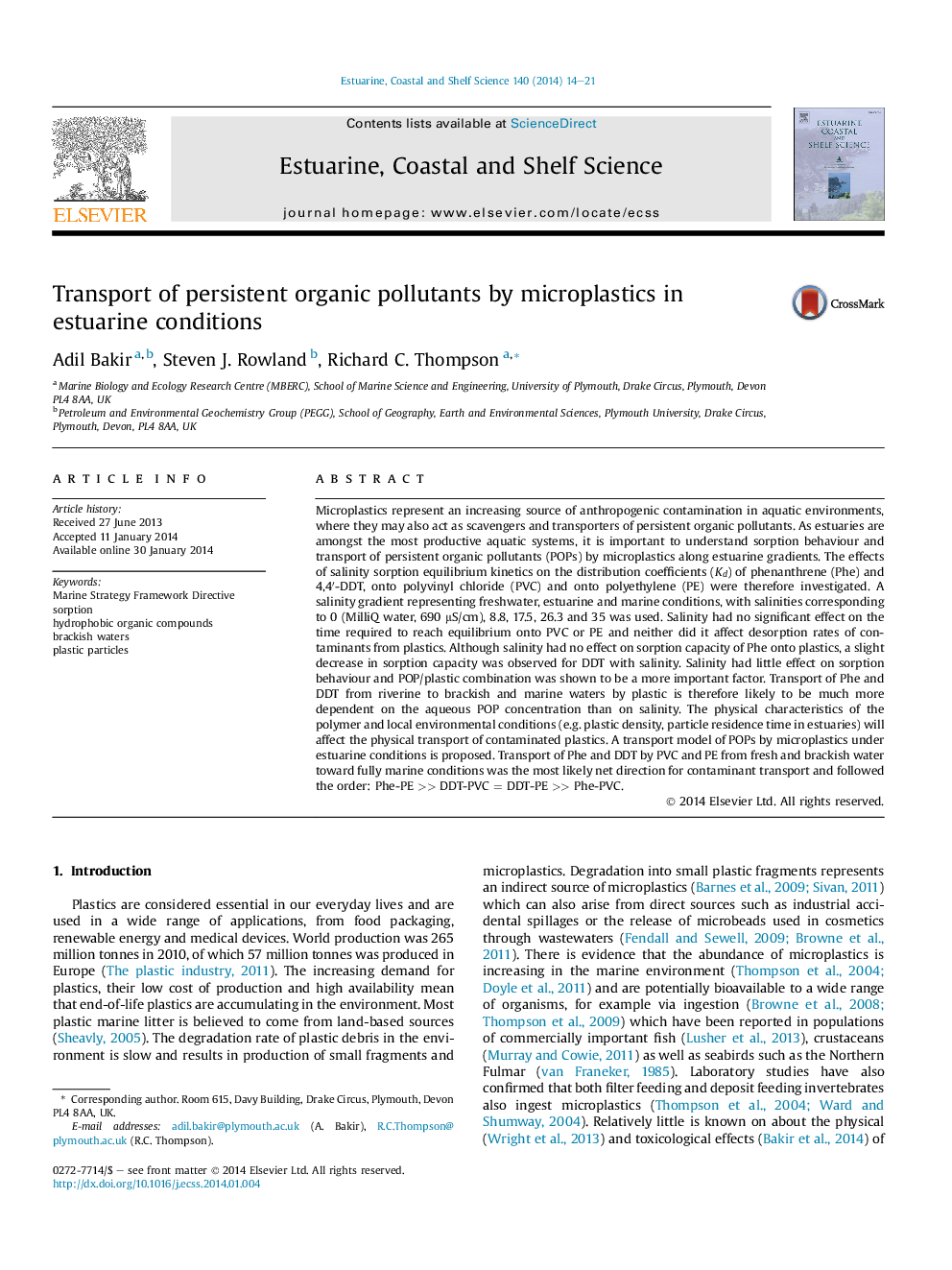| کد مقاله | کد نشریه | سال انتشار | مقاله انگلیسی | نسخه تمام متن |
|---|---|---|---|---|
| 4539715 | 1626656 | 2014 | 8 صفحه PDF | دانلود رایگان |
• Salinity effect was investigated on sorption/desorption of POPs onto microplastics.
• Little effect on sorption and no effect on their desorption rates was observed.
• Transport of POPs will largely depend on their concentration in each compartment.
• A transport model of POPs onto microplastics was proposed.
• Transport followed the order: Phe-PE >> DDT-PVC = DDT-PE >> Phe-PVC.
Microplastics represent an increasing source of anthropogenic contamination in aquatic environments, where they may also act as scavengers and transporters of persistent organic pollutants. As estuaries are amongst the most productive aquatic systems, it is important to understand sorption behaviour and transport of persistent organic pollutants (POPs) by microplastics along estuarine gradients. The effects of salinity sorption equilibrium kinetics on the distribution coefficients (Kd) of phenanthrene (Phe) and 4,4′-DDT, onto polyvinyl chloride (PVC) and onto polyethylene (PE) were therefore investigated. A salinity gradient representing freshwater, estuarine and marine conditions, with salinities corresponding to 0 (MilliQ water, 690 μS/cm), 8.8, 17.5, 26.3 and 35 was used. Salinity had no significant effect on the time required to reach equilibrium onto PVC or PE and neither did it affect desorption rates of contaminants from plastics. Although salinity had no effect on sorption capacity of Phe onto plastics, a slight decrease in sorption capacity was observed for DDT with salinity. Salinity had little effect on sorption behaviour and POP/plastic combination was shown to be a more important factor. Transport of Phe and DDT from riverine to brackish and marine waters by plastic is therefore likely to be much more dependent on the aqueous POP concentration than on salinity. The physical characteristics of the polymer and local environmental conditions (e.g. plastic density, particle residence time in estuaries) will affect the physical transport of contaminated plastics. A transport model of POPs by microplastics under estuarine conditions is proposed. Transport of Phe and DDT by PVC and PE from fresh and brackish water toward fully marine conditions was the most likely net direction for contaminant transport and followed the order: Phe-PE >> DDT-PVC = DDT-PE >> Phe-PVC.
Figure optionsDownload high-quality image (132 K)Download as PowerPoint slide
Journal: Estuarine, Coastal and Shelf Science - Volume 140, 1 March 2014, Pages 14–21
